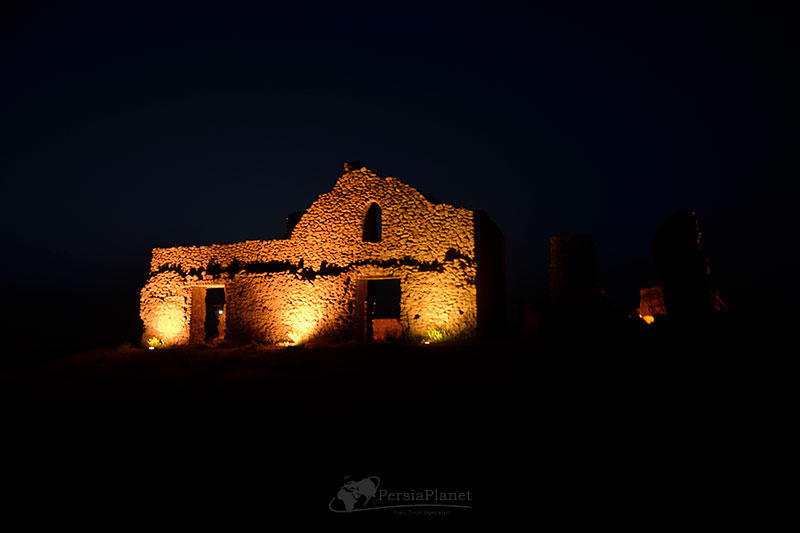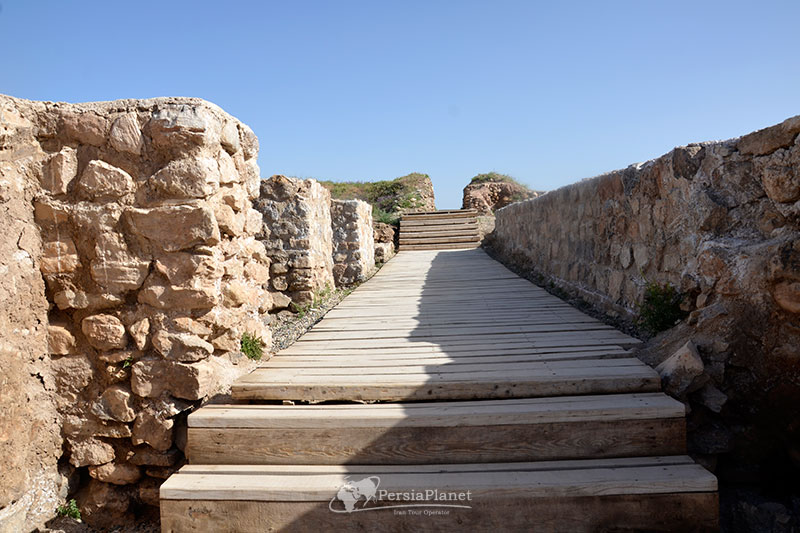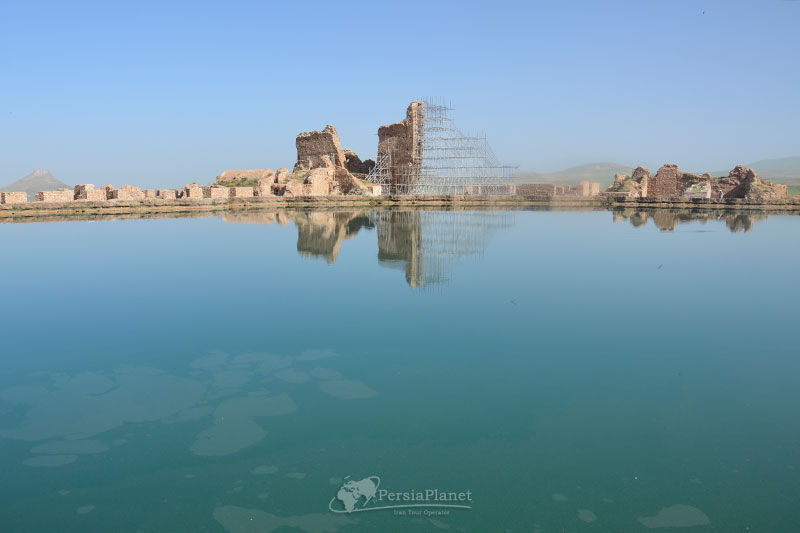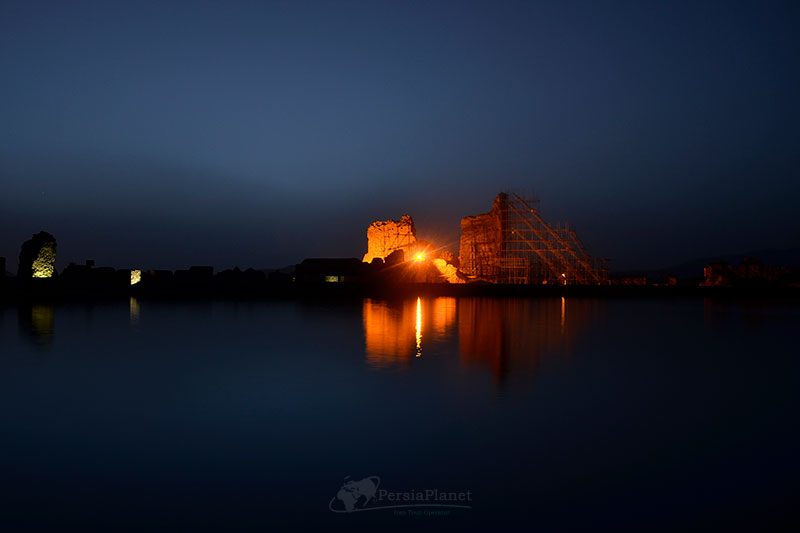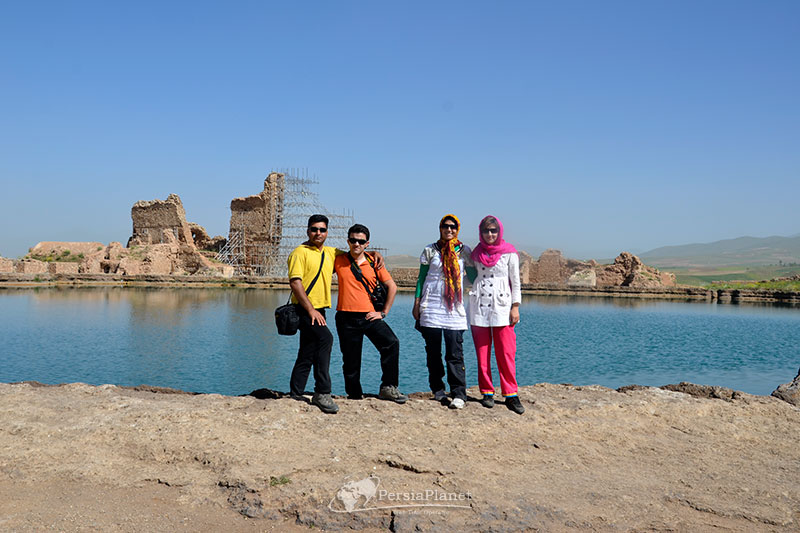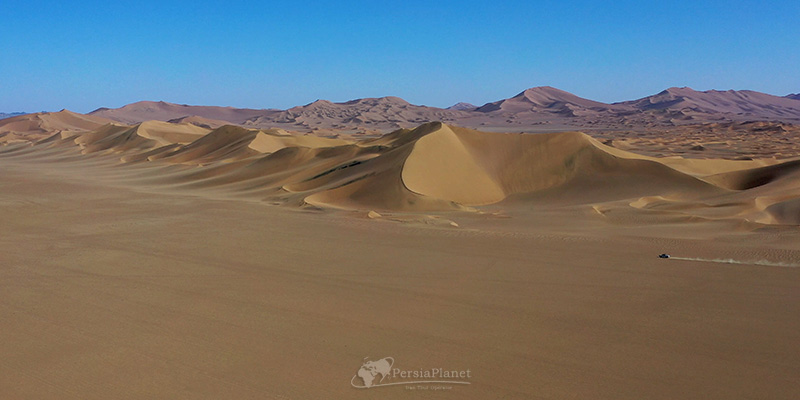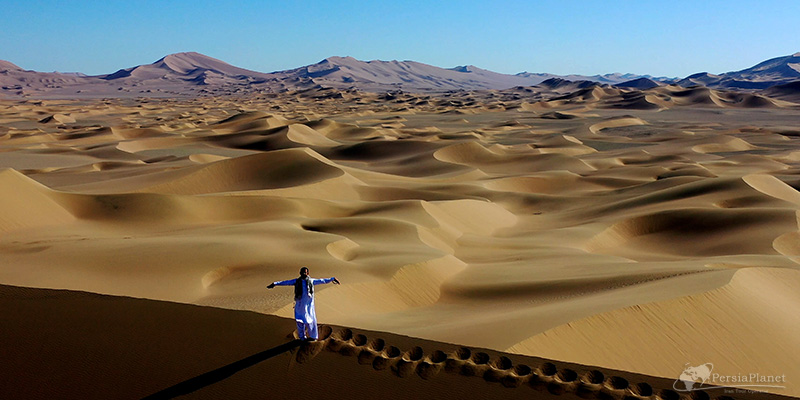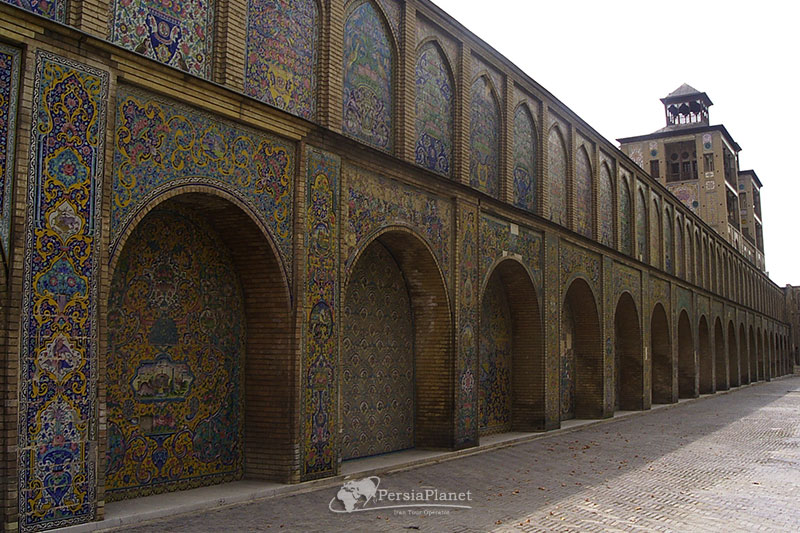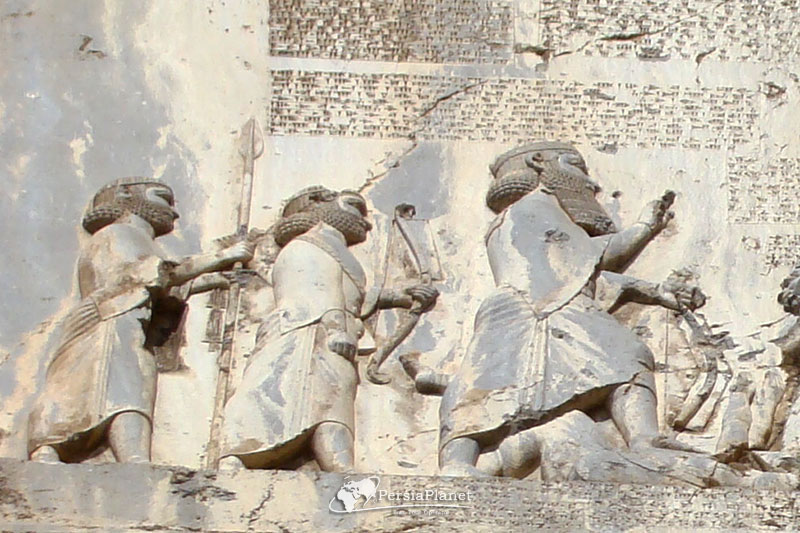Takht-e Soleiman archeological complex, Soleyman

Blue Mosque of Tabriz, Masjed Kabod
November 7, 2020
Soleiman Prison Mountain
November 7, 2020Takht-e Soleiman archeological complex is located 42 km northeast of Takab city in West Azerbaijan province. The antiquities of this complex and its lake are located on rocky and natural plates that have been formed from the water sediments of the lake. This region dates back to 3,000 years ago in terms of human habitation; And it is one of the most important historical monuments in the country, which has been registered as the fourth Iranian monument in the UNESCO World Heritage.
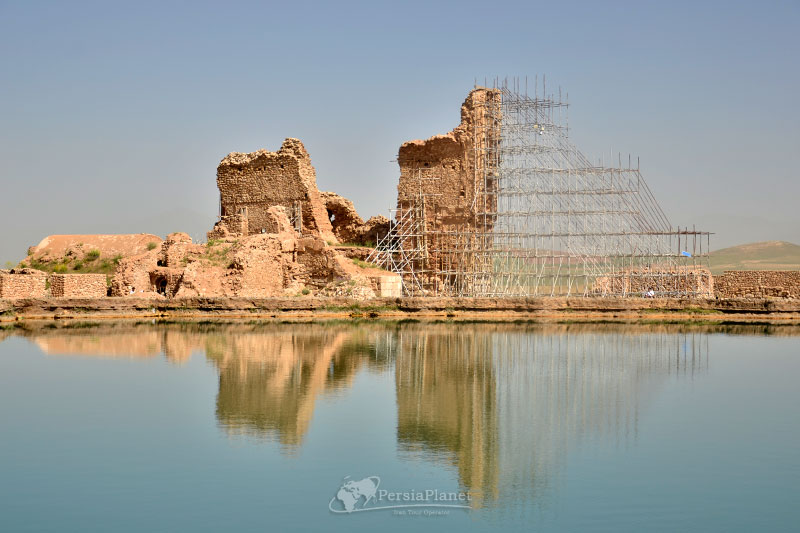
The ancient city of Takht-e-Soliman was inhabited by the Medes, Achaemenids, Parthians, Sassanids and Mongols, who were at the height of their prosperity and power during all these periods. Takht_e Soleiman (Throne of Solomon) dates back to three thousand years and its eternal fire for seven centuries was a sign of the greatness and authority of the Sassanid rule and Zoroastrianism. In fact, this region was the largest center of religious education and training of Zoroastrian priests in the Sassanid era. This collection was included in the list of national monuments of Iran and also was registered in the world in July 2003 to be the fourth sites of Iran in the UNESCO World Heritage List after Persepolis, Choghaznabil and Naghsh Jahan Square.

Where is Takht_e Soleiman?
Takht-e Soleiman is located 45 km northeast of the city of Takab in the southeast of West Azerbaijan Province. To go to Takht-e Soleiman from Tehran, you must drive towards Qazvin and then Zanjan, and from there go to Bijar, Takab and Takht-e Soleiman. The route of Tehran, Islamshahr, Saveh, Kaboudar Ahang, Bijar and Takab will also take you to Takht-e Soleiman.
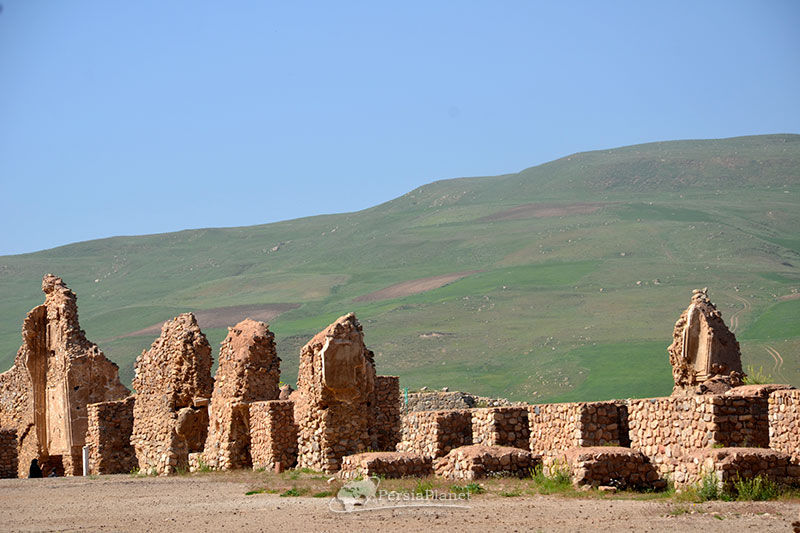
History of the Takht-e Soleiman
The buildings in the Takht-e-Soleiman complex were built in different historical periods, namely the Parthian, Sassanid and Ilkhanid periods, the most important of which are the fire temples and halls of the Sassanid period; However, in archeological excavations, traces of the Achaemenid and material periods have also been found in this place.
The artifacts from Takht-e-Soleiman show that humans have lived in this place for 3,000 years. In addition to belonging to the Paleolithic period, Iron Age I, II and III, these works include signs of the settlement of the people in the period of the Scythians, Manas, Medes, Achaemenids and Parthians in the Takht-e-Soleiman. The remains of inhabited villages in the northwest of the lake is one of these cases, which according to research is related to the Achaemenid period.
It is said that the construction of the Takht-e-Soleiman and its fire temple was given by Bahram Gour, one of the Sassanid kings; However, other Sassanid kings were involved in its prosperity and development. Until this place was destroyed in 624 AD by the Roman Empire. After the destruction of the Sassanid rule and the acceptance of Islam in Iran, the huge complex of Takht-e Soleiman was no longer revived.
After Islam, the cleric of this ancient site agreed with the conquering general of Azerbaijan not to destroy the fire temple in exchange for taxes, and therefore this fire temple continued to exist until 400 years later. During the Seljuk period, many Zoroastrians were forced to emigrate and took the sacred fire of Bahram to the India. Following this story, ordinary people entered this sacred area for the first time and lived in seasonal and urban life.
With the rise of the Mongol dynasty, this place was used as the summer capital of the kings, which is evidenced by the existence of 700-year-old buildings. During the Mongol rule of the Aga Khan in the seventh century AH, various buildings such as the eastern porch, council hall, octagonal and octagonal buildings were added to the Takht-e Soleiman complex.
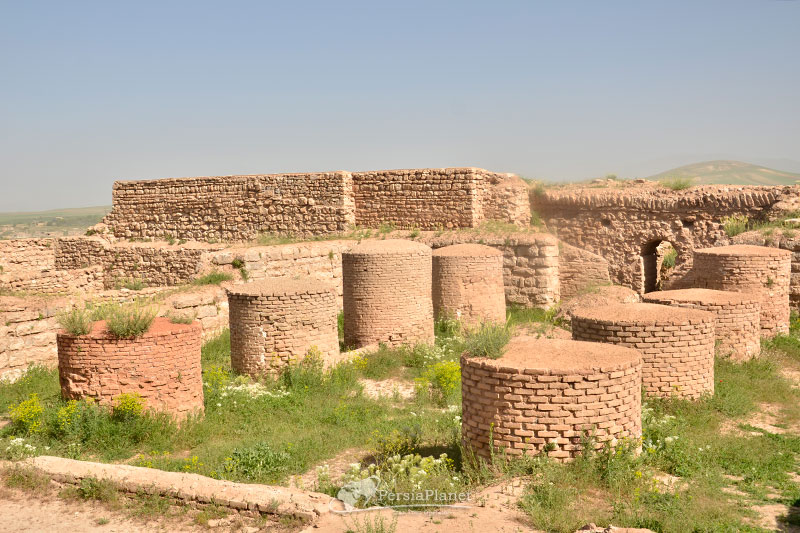
Takht-e-Soleiman Lake
In the area of Takht-e-Soleiman, you will encounter a beautiful view of a natural lake, the water of which comes out of a spring 120 meters below the ground, and because it has a lot of salts and lime, it is not suitable for drinking. In addition, “no swimming” signs have been placed around the lake so that tourists are not deceived by its beautiful appearance and do not commit suicide. This limestone spring is thousands of years old and is an important reason for the construction of the Takht-e-Soliman in this place.

The best time to travel to the Takht-e-Soleiman
The court of Takht-e-Soleiman has its own beauties and effects in every season of the year; However, the best time to visit this area can be considered as spring and early summer, that is, from May to July, when the weather is still cool and the surrounding mountains and nature are all green and covered with colorful flowers. Parts of the Throne of Solomon complex are illuminated during the night, with night walks and photographs of its beauties.
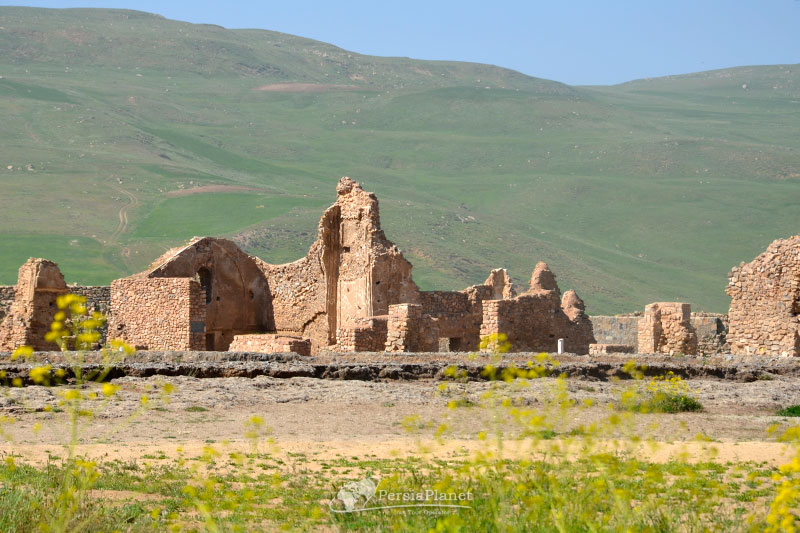
Visiting time of Takht-e Soleiman
Visiting hours: the first six months of the year from 8:30 AM to 7:30 PM and the second half of the year from 8:30 AM to 5 PM
Holidays: Tasua and Ashura mourning days, the death of Hazrat Mohammad, Imam Reza, Hazrat Fatemeh and June 4 and 5
Religious holidays are based on the Arabic calendar and change every year according to the normal calendar.
Mehdi Gholami.


